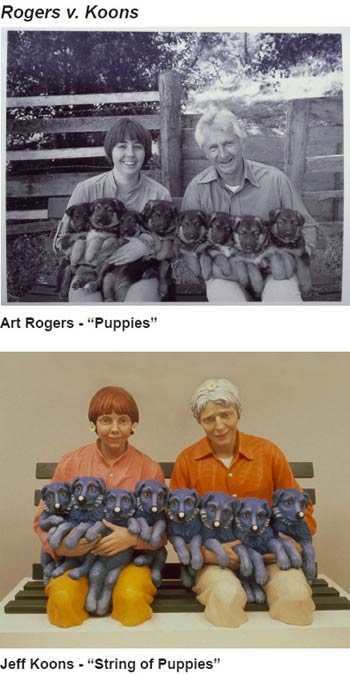Does the lower image constitute copyright infringement of the upper one? The highly respected Judge Birss of the Patents County Court in the UK has ruled in Temple Island v. New England High Teas that it does. The images – which are both collages - are clearly not identical. However, there is clearly some similarity in look and feel. The ruling seems to challenge the conventional wisdom in many circles that taking a picture of a public place taken from the same perspective and under similar conditions to an earlier picture is not an infringement. The idea of a red object or figure on an otherwise black and white background is hardly new. In fact, the Plaintiff got the idea from the famous film Schindler's List. The ruling is controversial and has been discussed by in some detail by my favourite feline IP bloggers at the 1709 Blog and the IPKat blog.
Americans will not be particularly astonished by this ruling, given that the US 2nd Circuit ruled in 1992 that Jeff Koons sculpture at the bottom infringed Mr. Rogers photo above it. See Rogers v. Koons.
For more on Jeff Koons' various copyright cases, see here - from whence the above images come.
The Koons decision is a major and controversial milestone in the American law of fair use. The UK decision - which is not binding on higher courts - does not mention fair dealing.
HK








The judgment doesn't mention fair dealing because it's simply irrelevant: fair dealing is only permitted if it's for non-commercial research, private study, criticism, review, or news reporting (and the last of those doesn't apply to photographs). But on any definition, what's fair about this? It was all about trying to get out of having to pay a royalty to use the first image, after a dispute arose over what was due under a licence, and even with a much wider fair use defence I think the defendant would have a hard time convincing a judge that there was any fairness in trying to find a way to stop paying to use something so similar.
ReplyDeleteBut what exactly is 'original' about the first image?
ReplyDelete